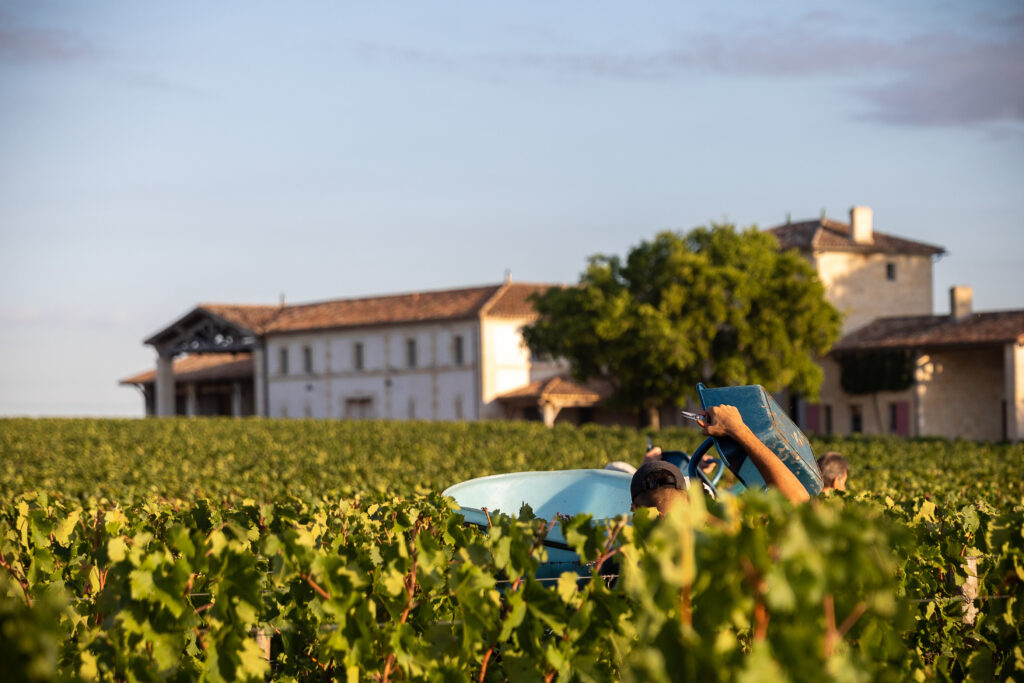What makes a wine truly exceptional? Most would agree that quality is the number one criterion. The next logical question is therefore, what makes a wine truly qualitative? Terroir, viticultural practices, winemaking techniques – all these factors are crucial, and behind them are people in the driving seat, nurturing the vines through whatever Mother Nature throws at them, guiding the grapes through harvest, and finally conducting the juice through fermentation and maturation.
Omri Ram, winemaker for S.C.A Château Lafleur talks about vines as if they were people, a part of the team – a poetic but pertinent way to convey how much humanity is poured into making the iconic wines of Château Lafleur and Château Grand Village. We often find ourselves describing the finished wines as “magical” – they are not made by magic, but by hard work, extreme intent, and by a team in perfect harmony with each other and their surroundings.
Writing about wines as singular as these should be easy. There is so much to say – technical detail, progress, personality, projection for the future – and yet, no words really do them justice. Nevertheless, we’ll not shy away from a challenge, and since one major condition for the title of “world wine icon” is a long history, this feels like a good place to start.
A short history

© S.C.A Château Lafleur
Château Lafleur has been in the same family since 1872. Its story began with the purchase of a 4.5-hectare plot on the Pomerol plateau by Henri Greloud in 1872. Some 150 years later, the estate is now owned by Greloud’s great great grandson, Jacques Guinaudeau, his wife Sylvie, their son, Baptiste Guinaudeau, and his wife Julie. But the notion of family goes well beyond basic birthright. Over the years, each family member has contributed key components that make the Société Civile de Château Lafleur what it is today. These elements – recognition and realisation of terroirs, technical advances, and above all, a shared vision and ambition – result in a unique stable of 6 crus.
The Wines

© S.C.A Château Lafleur
The first steppingstone in understanding red winemaking at Lafleur is “Bouchet”. The historical name for Cabernet Franc, the Bouchet variety at Lafleur originates from the massal selection done by André Robin (Greloud’s son-in-law) in the 1930s – vines which Robin’s daughters, Thérèse and Marie, managed to save from the great frost that destroyed many vines in Bordeaux in 1956. All present-day plantings at Lafleur are based exclusively on these ancestral genetics, which offer more diversified capability – resistance against heat, drought, disease etc – than their modern-day counterparts.

© S.C.A Château Lafleur
Château Lafleur
The 3.75 hectares of vines surrounding the Lafleur house – equal parts Bouchet and Merlot – are cultivated to produce Lafleur’s flagship wine. The vines grow on 3 distinct soil types – explaining in part the complexity of this cru.
Les Pensées de Lafleur
Jacques and Sylvie Guinaudeau created Les Pensées in 1987. Though starting life as a second wine using the younger fruit from Lafleur plots, Les Pensées quickly evolved as a cru in its own right. The cru today is produced from a mere 0.7 hectare of various plots surrounding the Lafleur garden, whose soils feature more clay, and therefore reflecting more the typicity of Pomerol.
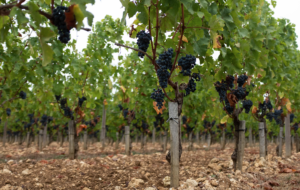
© S.C.A Château Lafleur
Les Perrières de Lafleur
Winemaker, Omri Ram describes Les Perrières succinctly: “what if we put Lafleur on limestone?”. The light bulb, initiated by Baptiste and Julie began with an experiment, growing Bouchet and Merlot on the fossil-spotted limestone soils of Fronsac in 2009. Following 9 years of research – terroir selection, soil studies, purchasing new parcels – Les Perrières was born in 2018. The subsoil of Perrières’ vineyard today was formed by ancient limestone quarry tunnels. The wine therefore carries the genetics of Lafleur, while also sporting the limestone influence through precision of tannins and a strong minerality.
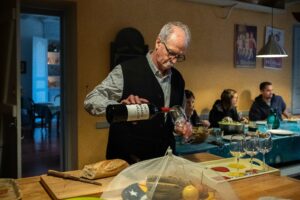
© S.C.A Château Lafleur
Château Grand Village
The birthplace of the Guinaudeau family’s winemaking history, Château Grand Village was founded by Jacques’ ancestor, Jacques Verdery, in 1650. Situated in Mouillac (a part of Fronsac), it sits outside what modern winemakers consider the most prestigious winemaking sites of Bordeaux, but occupies part of a historic belt of vineyards once favoured for making exceptional wines by the Romans and Charlemagne.
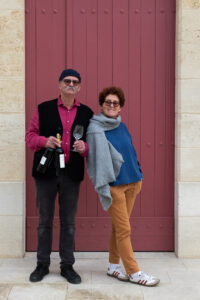
© S.C.A Château Lafleur
Les Champs Libres
Another brainchild of Julie and Baptiste, Les Champs Libres is produced from Sauvignon Blanc grown on selected parcels of the Guinaudeau’s clay-limestone terroirs in Fronsac. In production since 2013, the team has gradually weaned out Bordeaux Sauvignon Blanc plots (apart from one exceptional old-vine parcel), in favour of vines originating in Sancerre, reviving the DNA of France’s best Sauvignon Blanc on Fronsac terroir. This is a dry white made entirely in its own image.
Grand Village Rouge & Blanc
Jacques and Sylvie Guinaudeau took over all winemaking production at Grand Village in 1980. The quality improvements in these red and white “Village” crus ever since are astonishing. Much investment has been made in replanting and revamping the cultivation of its vines. The same winemaking practices used to make Château Lafleur are also applied at Grand Village. Today the production of Grand Village Rouge far outweighs that of the Blanc (as planting for further Sauvignon Blanc of sufficient quality is still underway).
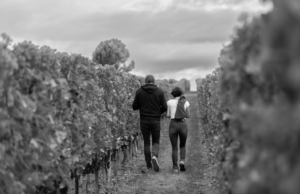
© S.C.A Château Lafleur
